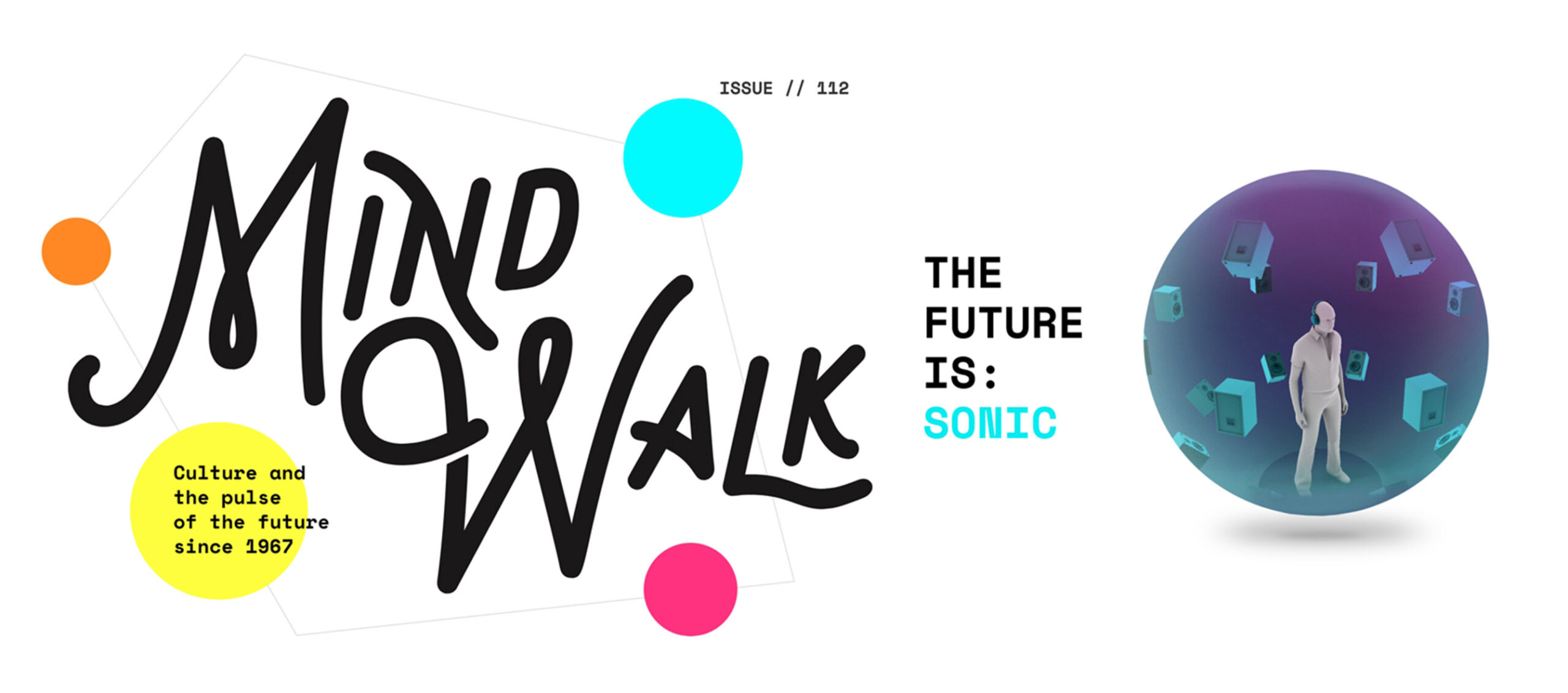The Future is Sonic
Our society has entered an audio renaissance, with sound riding high as a way to communicate and commune. There are more than 106 million U.S. podcast listeners; Clubhouse, the audio-only social-networking app, has cruised to 10 million weekly active users and a $4 billion valuation; and Calm, the meditation app that streams soothing thoughts into stressed consumers’ ears, is worth $2 billion.
Audio innovation is another example of how humans are merging with technology for happier, healthier, and more experientially rich lives. The sound-centric marketplace is just getting started. Join us this week as we give you an earful of what’s ahead.
NOW: Augmented Reality Hearables
What’s Fresh: Smart earbuds can help us communicate, track our biodata, and filter our experiences. Noise can be nixed, and preferred soundscapes added. Peripherii embeds its tech into earrings, so there’s no putting in and pulling out of earbuds. Bose and HERE are creating hearables with contextual user experiences (i.e., users receive content relevant to where they are) based on the user’s field of vision or direction of travel. Bragi’s software suite allows hearable wearers to shake their head to respond to auditory input.
How it Changes the Game: A brand can whisper in your ear with customized offers when you enter a store, or contextually as you move through your day. Soon, we’ll just nod to order anything we need.
3 Action Steps for Brands:
- The global hearables market will grow to $94 billion by 2026. Prep your product pipeline or find your partners.
- Pivot from visual marketing materials and start whispering in your customer’s ear. What will you sell? What will you say? Your voice becomes your brand.
- Consider the full range of auditory input — from promoting your purpose to providing pleasure — as you sculpt your strategy.
NOW: Voice Fakes
What’s Fresh: You’ve heard about deepfakes, which tech-transform images of celebrities or civilians so they appear to do or say false, malicious things? The same thing is about to happen — but it’s our voices that will be hijacked. Machines are able to identify virtually any human by their voice in real time.
How It Changes the Game: Vocal privacy is the next frontier. Given the emerging omnipresence of voice-command tech — eMarketer estimates there are 132 million voice assistants and smart speakers in the United States — ensuring the security of your consumers’ “vocal prints” will be vital.
3 Action Steps for Brands:
- Be fully transparent about how you are preserving and using your customers’ voices.
- Hackers recently infiltrated TV remotes and eavesdropped on people. Scrutinize and safeguard your products and services by pioneering vocal firewalls.
- Ask your customers and partners whether “just-for-fun” voice-faking can be used as a product feature and in marketing.
NEXT: Voice-Activated Mood Modulation
What’s Emerging: Your tone of voice will be used to track and tweak your mood. Companion MX is a therapeutic tool for those with mental illness. It listens in on your calls, sensing signals of problems ahead, and then alerts you and your HCP to take action. Imagine this being extrapolated and applied to all of us for happier outcomes.
How It Creates the Future: Your device or implantable will monitor your tone of voice and step in with solutions when you’re feeling sad, mad, or stressed. In the near term, intervention might be an on-demand meditation or therapy session; further into the future, it will be a little chemical correction or boost to your brain rhythms.
3 Things to Prepare for:
- The global emotion-detection and recognition market will boom to $37.1 billion by 2026.
- Emotion reading and response features will be integrated into product-development plans.
- The sound of a voice will increasingly be used to boost health and happiness.
The Future of Health and Happiness Report
Download our annual guide to how health and wellbeing are transforming culture and business.




